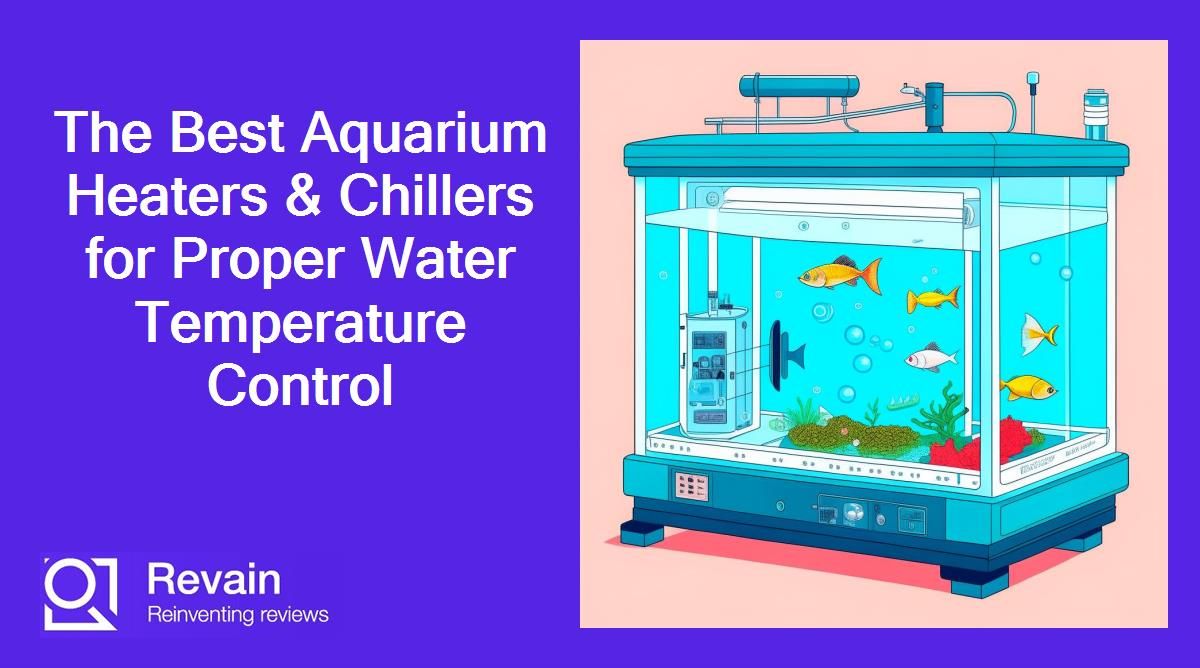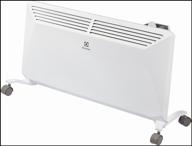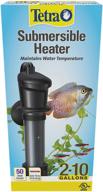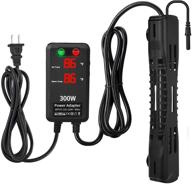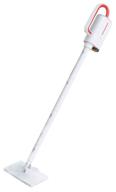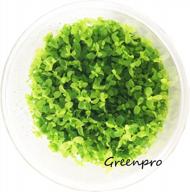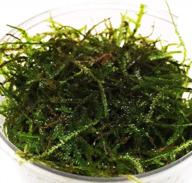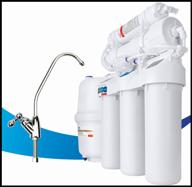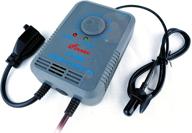Types of Aquarium Heaters
Keeping your aquarium at the ideal temperature for your fish is critical for their health and wellbeing. Aquarium heaters help maintain a stable, comfortable water temperature for your tank inhabitants. There are three main types of heaters designed for home aquariums:
Top products in 🐟 Aquarium Heaters & Chillers
Submersible Heaters
Submersible heaters are the most common type of aquarium heater. As the name suggests, these heaters are fully submerged in the aquarium water. They come in a variety of wattages to accommodate different sized tanks.
- Fully submersible design blends into tank
- Wide range of wattages for tanks of all sizes
- Typically have built-in thermostats to regulate temperature
- Relatively affordable compared to other heater types
Another interesting products
Substrate Heaters
Substrate heaters are designed to be buried under the gravel or sand at the bottom of the aquarium. They gently warm the tank from the bottom up. Substrate heaters are best for providing supplemental heating in cold weather when the ambient temperature drops.
- Provides gentle, even heating throughout the tank
- Low wattage models safe for small tanks
- Keeps substrate warm for species that prefer it
- Can be tricky to position properly under substrate
In-Filter Heaters
In-filter heaters mount inside the filtration system, usually in the filter box or chamber. The motor and impeller of the filter help disperse the heat evenly throughout the tank. They are compact and require no additional equipment inside the aquarium.
- Small and unobtrusive
- Takes up no space inside the tank
- Works with filter flow to distribute heat
- Only compatible with certain filter types
- Can wear out filter motor prematurely
When selecting an aquarium heater, consider factors like your tank size, desired temperature, fish species, and your budget. Submersible models are the simplest, most versatile heaters suitable for most home aquariums. Always read reviews and manufacturer recommendations to find the best heater for your setup.
Similar products
Choosing the Right Wattage Aquarium Heater
Selecting an aquarium heater with the proper wattage is crucial to maintaining a stable, healthy temperature for your fish. The wattage indicates the amount of power the heater draws and how much heat it can produce. Following a few guidelines will help you pick the best wattage for your tank.
Factor in Tank Size
A common rule of thumb is to choose a heater that has 3-5 watts per gallon of actual water volume. For example:
- 10 gallon tank = 30-50 watt heater
- 29 gallon tank = 87-145 watt heater
- 55 gallon tank = 165-275 watt heater
This range allows enough heating power but reduces the risk of temperature spikes. Never go below 3 watts per gallon—the heater will struggle to warm the water. Over 5 watts per gallon runs hot and can overheat the tank.
Consider Ambient Temperature
Room temperature also impacts your heater needs. If your tank is in a consistently warm room, you may be able to get by with lower wattage. But if the ambient temperature drops significantly at night or in winter, bump up the wattage for sufficient heating capacity.
| Room Temperature | Heater Wattage |
|---|---|
| 76-80°F (24-27°C) | 3 watts/gallon minimum |
| 68-76°F (20-24°C) | 4 watts/gallon |
| 65-68°F (18-20°C) | 5 watts/gallon recommended |
Factor in Fish Species
Tropical fish require warm, stable temperatures between 75-82°F. Goldfish and koi prefer slightly cooler temps of 65-75°F. Arctic species need chilly water from 45-65°F. Consult your fish profile to determine the ideal temperature range.
Sensitive fish like discus may do best with two smaller heaters for redundancy, rather than one larger unit. This prevents deadly temperature spikes if one heater fails.
Choose a Quality Heater
Look for quality heaters with built-in thermostats from reputable brands like Eheim or Aqueon. Heaters with external thermostats attached to the power cord are outdated and less accurate. Pay the extra cost for reliability—your fish depend on it!
Following these guidelines when selecting an aquarium heater will help ensure your tank stays at a safe, stable temperature for a thriving underwater community.
Setting and Maintaining Proper Water Temperature
Water temperature is crucial for the health and wellbeing of fish and aquatic life. Each species thrives in a specific temperature range. Properly setting and maintaining water temperature helps fish avoid stress and disease.
Determine the Optimal Temperature
Ideal water temperature varies based on the fish species. Do research to find the exact range your fish need. Some general guidelines:
- Tropical freshwater - 75°F to 82°F
- Coldwater - 45°F to 65°F
- Marine reef - 76°F to 84°F
Measure your tap water temperature. Aquarium water should be within 2°F of your tap water when first filled.
Selecting Equipment
Choose an appropriately sized heater for your aquarium using a rule of 3-5 watts per gallon. Place it near an inlet to promote water circulation. Use a thermometer to monitor temperature.
Set the Heater Thermostat
Set your heater to the low end of your species' temperature range. Place it horizontally 2-3 inches above the substrate. Allow 24 hours to gradually warm to the thermostat setting. Verify with a thermometer.
Perform Routine Maintenance
- Clean algae buildup on heater with vinegar and rinse well.
- Check temperature daily and adjust thermostat accordingly.
- Replace heaters over 2 years old.
- Clean or replace thermometer when calibration is off.
Avoid Temperature Fluctuations
Prevent drastic temperature changes, which stress fish. Make adjustments in increments of 1-2°F per hour.
- Unplug heaters when doing water changes. Refill tank slowly.
- Use room or tank fans to cool overheated tanks gradually.
- Install a backup heater set 2°F lower to avoid spikes if primary heater fails.
Monitor Water Temperature
Check your thermometer daily and observe fish for signs of temperature stress like lethargy, loss of appetite, or gasping at the surface. Make adjustments as needed to maintain an optimal stable temperature.
Consistent monitoring and routine heater maintenance keeps your aquatic residents happy and healthy.
Using Chillers to Cool Aquarium Water
Aquarium chillers help lower and maintain cooler water temperatures required by many fish and invertebrates. While most tanks need heaters to warm the water, chillers are critical for species that thrive in colder environments.
When to Use a Chiller
You need an aquarium chiller for:
- Coldwater species like goldfish, koi, and trout
- Invertebrates like coral and anemones in reef tanks
- Tanks without air conditioning in hot climates
Chillers keep water temperatures stable when room temperature rises above the desired range for your aquatic residents.
How Aquarium Chillers Work
There are a few different types of chillers available:
- In-line chillers connect to the piping system of external canister filters.
- Drop-in chillers mount inside the tank and work similar to aquarium heaters.
- Fan-assisted chillers use fans and evaporative cooling to lower temperatures.
Most aquarium chillers work through a refrigeration compressor and coils that remove heat from the water. The cooled water then flows back into the tank.
Choosing the Right Chiller
Consider the following when selecting a chiller:
- Tank size - Calculate around 1 watt per gallon of water for adequate cooling power.
- Ideal temperature range - Double check your species' requirements.
- Room temperature - Account for warmer ambient temperatures.
- High quality compressor - Look for units made for aquarium use.
Installing and Using a Chiller
Follow these tips when using your aquarium chiller:
- Place in-line chillers outside the tank after external filters.
- Install drop-in chillers horizontally in the tank.
- Set chillers 2°F below the desired temperature.
- Check water temperature daily and make adjustments.
- Clean condenser coils regularly to maintain efficiency.
Using an aquarium chiller allows you to house coldwater species even in warmer environments. With proper setup and monitoring, chillers can become a vital part of your tank maintenance routine.
Aquarium Heater Safety Tips
Aquarium heaters provide essential temperature control for fish tanks. However, heaters can become hazardous if used improperly. Follow these safety tips to prevent accidents and keep your fish and tank safe.
Purchase a Quality Heater
Choose a reputable brand like Eheim or Aqueon. Avoid cheap heaters without built-in thermostats. The extra cost is worth it for safety and reliability.
Size the Heater Properly
Undersized heaters can overheat and explode, while oversized units cycle erratically. Follow the wattage guidelines:
- 3-5 watts per gallon for most tanks
- 5-7 watts per gallon for extremely cold rooms
Fully Submerge the Heater
Leave at least 2 inches of water above the top of horizontal heaters. Vertical models should be completely submerged. Failure to do so causes overheating and burns out the heating element prematurely.
Position the Heater Properly
- Place horizontally on the bottom or vertically at the back of the tank.
- Angle the heat flow to promote proper circulation.
- Keep away from plants and ornaments to prevent damage.
Inspect the Heater Frequently
Examine for leaks, mineral deposits, and worn power cords. Replace damaged heaters immediately. Standard heaters should be replaced every 2-3 years.
Clean the Heater Properly
Remove buildup with white vinegar or liquid calcium cleaner. Avoid abrasive scrubbing. Rinse thoroughly before returning to the tank.
Avoid Heater Damage
Never turn heaters on out of water. Don't allow the glass to contact hard objects in the tank. Even minor cracks can lead to catastrophic failure.
Monitor Water Temperature
Use a separate thermometer to verify the heater is maintaining the correct temp. Check daily for unusual fluctuations.
Unplug During Maintenance
Always disconnect heaters when performing water changes, cleaning, or moving the tank. Accidental exposure to air can cause rapid overheating.
With proper setup, maintenance, and monitoring, aquarium heaters can safely keep your fish and invertebrates comfortable for years.
Top Brands for Reliable Aquarium Heaters
Choosing a trustworthy aquarium heater brand is key to maintaining safe, steady temperatures in your tank. These top manufacturers produce high-quality, long-lasting heaters.
Eheim
Eheim is renowned in the aquarium world for exceptionally engineered equipment. Their heaters deliver precise temperature control thanks to advanced electronic thermostats and durability from shatterproof glass. Models like the Eheim Jager come highly recommended.
Fluval
Fluval heaters use cutting edge materials like their patented Super Therm polymer and VueTechTM technology for precise readings. Their sleek, ultra-thin designs maximize energy transfer for powerful heating. The Fluval E Electronic Heater series offer advanced safety features.
Cobalt Aquatics
Cobalt Aquatics Neo-Therm heaters undergo rigorous quality control testing for longevity. Their one touch system allows easy temperature setting. Integrated thermal protection shuts down the heater before overheating.
Hydor
Hydor produces a variety of compact, versatile aquarium heating options. Their acclaimed Theo heaters come in models for tanks of all sizes. Unique electronic thermostats self-test for optimal performance and shut down if overheating is detected.
Aquatop
Aquatop is well-known for budget friendly aquarium products that don't compromise on quality. Their heaters use titanium tubing for rapid heat transfer. Dual sensing controls prevent temperature spikes. The Aquatop GH series are excellent mid-range models.
Aqueon
Aqueon heaters feature fully submersible shatter-resistant construction for safety and durability. Their precise electronic thermostats self-regulate against overheating. The Aqueon Pro adjustable heaters have an easy to read LED temperature display.
When it's time to replace or upgrade your aquarium heater, turn to one of these top brands for models you can trust. Investing in a quality heater from a reputable manufacturer will give you peace of mind knowing your fish are in good hands.
Best Aquarium Chillers
Based on the search results, here are some of the best aquarium chillers:
- JBJ Aquarium Arctica Titanium Chiller - efficient and powerful operation
- Chill Solutions Aquarium Chiller - reliable and efficient, with thermoelectric technology
- Active Aqua Water Chiller - eco-friendly, with a powerful flow rate
- AquaEuroUSA - robust and reliable
- AquaLogic Delta Star - robust and requires an external controller
- Popamps 40 Toogle Aquarium Chiller - provides the best in water heat dissipation and cooling performance
- Baoshishan - great for small tanks and keeps the temperature consistent
It's important to choose the right aquarium chiller for your tank size and needs. Some factors to consider include efficiency, noise level, and eco-friendliness. It's also important to properly maintain your chiller to ensure it continues to work effectively.
Aquarium Chiller 40 Gallon
Based on the search results, here are some of the best aquarium chillers for a 40-gallon tank:
- JBJ Mini-Arctica Chiller - designed for aquariums up to 40 gallons, with high-quality, corrosion-resistant components and a compressor that saves electricity
- Chill Solutions CSXC-1 Thermoelectric Aquarium Chiller - perfect for nano and small aquariums, with reliable and efficient thermoelectric technology
- Aqua Euro Max Aquarium Chiller - built on years of chiller development and feedback, with a well-designed titanium heat exchanger that provides high-capacity cooling with less energy required
- IceProbe Thermoelectric Aquarium Chiller - a budget-friendly option for smaller tanks that only need to drop the temperature by 5 to 10 degrees, but may only reduce the water temperature by 1 to 2 degrees in a larger 40-gallon tank
- BAOSHISHAN Aquarium Chiller - rated for tanks up to 40 gallons, but may only work marginally well for larger tanks
- Ezcasch 1/10th hp Aquarium Chiller - rated to handle aquariums up to 200 gallons, with a built-in surge protection feature
- Poafamx 16gal Aquarium Chiller Heater - designed for tanks up to 20 gallons, but may work marginally well for tanks up to 30 gallons and rated for 40 gallons
It's important to choose a chiller that is suitable for your tank size and needs. Consider factors such as efficiency, noise level, and eco-friendliness. It's also important to properly maintain your chiller to ensure it continues to work effectively.






